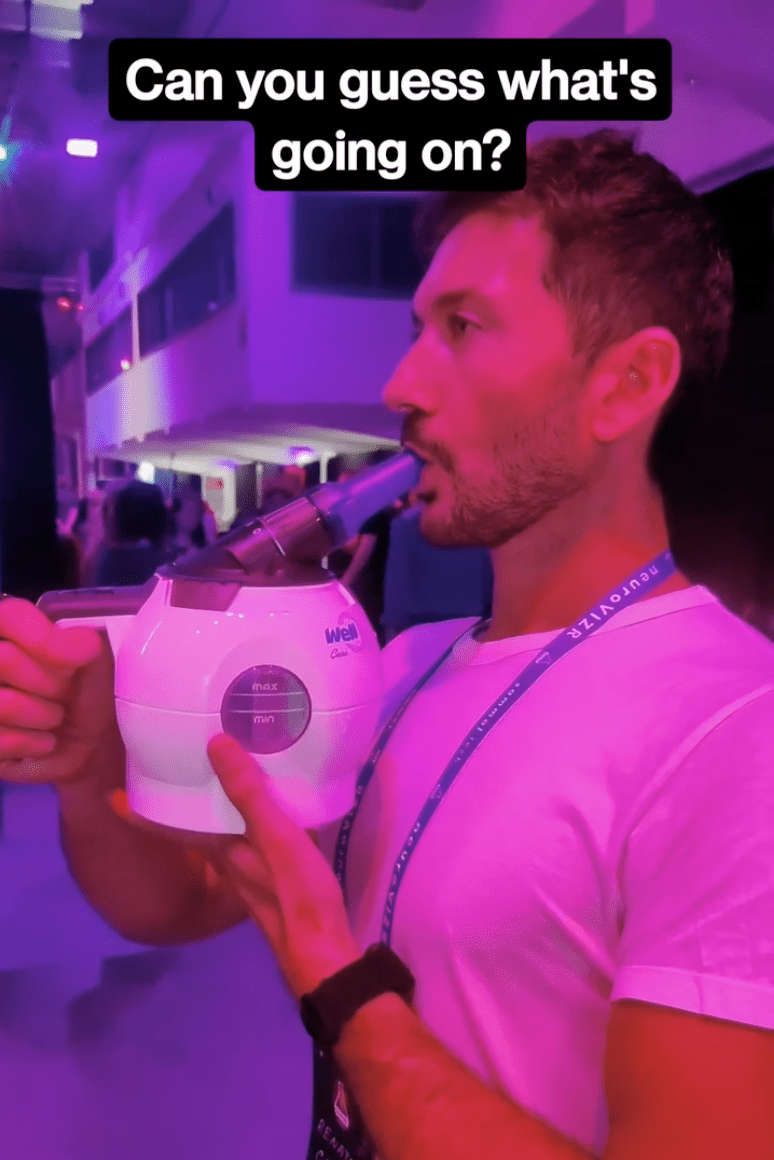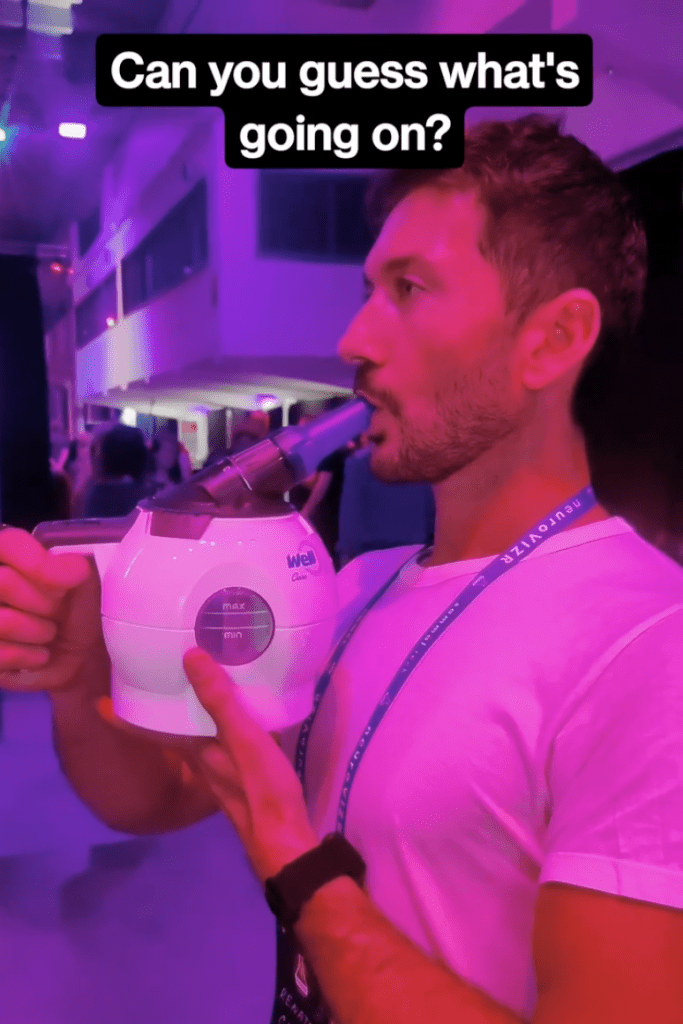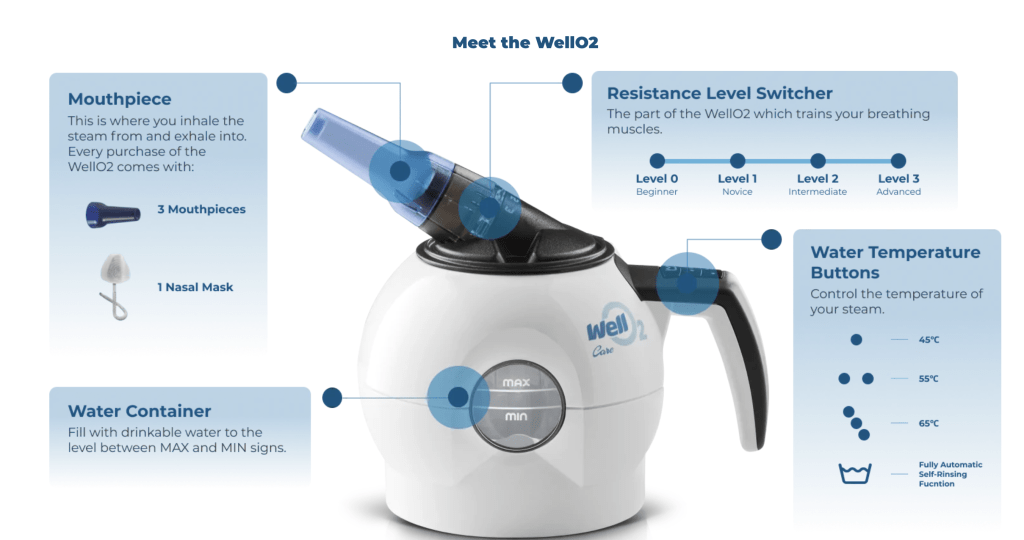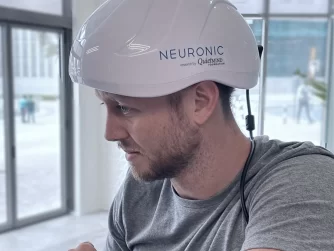
Living with breathing difficulties is no laughing matter. As we know, breathing truly is the foundation of our well-being – it affects everything from speaking to exercising, and sleeping to
mental and cardiovascular health.
Remember, if you have any breathing difficulties, you should always check with your doctor first! However, in this article, we look at some of the not-so-serious physiological causes and symptoms of breathing
difficulties and how we can improve our breathing!
Breathing is much more than you think!
Breathing is a two-way process that consists of inhaling and exhaling.
While resting, the respiratory muscles that take part in inhalation are relaxed and the air pressure in the lungs is equal which means there’s no airflow. We inhale when our brain sends a command – a
nerve impulse – from its respiratory center to respiratory muscles. This activates the diaphragm and when it contracts, the chest cavity expands and the lower ribs rise. The rib cage muscles allow the
chest to expand evenly.
When we inhale, we should see movement in the abdomen and lower chest area. As the thoracic cavity expands, the pleura expands and so do lung tissue and cells. The negative pressure in the
lung tissue makes the airflow into the alveoli. Receptors in the lung wall respond to the stretching and the receptors stop the contraction signals from the brain to the inhalation muscles. This is followed by exhalation.
Exhalation is passive because as the inspiratory muscles relax, the elastic structures of the thoracic cavity press the lungs and chest. The diaphragm rises upwards, and the chest cavity becomes smaller
from below. As the thoracic cavity shrinks, the alveoli also shrink, creating excess pressure in the lung tissue. Air flows out of the alveoli until the pressure is equalised.
Each inhalation and exhalation is followed by a short pause before the next breath. Calm breathing with pauses allows air to flow to the very bottom of the lungs and into the alveoli. This also
facilitates the removal of carbon dioxide. The normal ratio between the lengths of inhalation and exhalation is 1 to 1,5-2, meaning one exhalation is about 1: 1.5 – 2 longer than inhalation.
The muscles of the upper airways also play a role in breathing
Without upper airway muscles, breathing would be challenging. When we rest, breathing makes the vocal cords open, widening the vocal fold, and allowing unobstructed airflow to the larynx.
This is done by the spur muscles, which are activated by reflex. Without this reflex, the vocal cords would block the vocal tract, increase resistance to airflow in the upper airways and make breathing
difficult. When we breathe heavily, the annular cricoid muscle helps open vocal cords, thus increasing the laryngeal diameter. Closing of the vocal cords occurs mainly through the relaxation of
the cochlear muscle, but some muscles can also actively close the vocal fold.

Breathing needs to be in balance – just like the universe
In the past, breathing disorders not directly related to a physical illness were commonly referred to as hyperventilation syndrome. However, in the 1990s the term was changed to dysfunctional
breathing because of the narrowness of the term hyperventilation syndrome.
There is no precise definition of dysfunctional breathing. Anything that deviates from so-called normal breathing is classified as dysfunctional breathing. These include hyper- and hypoventilation
affecting blood oxygen and carbon dioxide levels, changes in breathing technique, and the occurrence of respiratory symptoms.
Imbalanced breathing may be associated with a disease, but it’s not a disease in itself – rather, a respiratory disorder.
Breathing is constantly changing and reacting to our environment and life events. Each of us has up to 20-30 different breathing patterns for different situations.
Listed below are the most common symptoms of imbalanced breathing, which can help you identify it:
- non-existent pause after exhalation
- holding the breath after inhalation
- increased respiratory rate at rest
- breathing through the mouth
- use of assisted breathing muscles at rest
- sighing and yawning
- excess tension, stiffness, or dysfunction of the abdominal muscles
- constant twitching
- swallowing air
- lack of natural spinal movement associated with breathing
- sensations of shortness of breath
Respiratory training and the role of the respiratory muscles in the treatment of breathing
Luckily, respiratory muscles can always be strengthened! Athletes have long used various exercises to strengthen their inhalation muscles to increase their oxygen intake, while singers and wind
instrument players have focused on strengthening the exhalation muscles to prolong exhalation.
The breathing problems of people with lung disease are typically treated with a variety of exhalation exercises, as many conditions are caused by airway constriction. When it comes to people with
respiratory problems, resistance is not usually used to improve respiratory muscle strength but to open the bronchial tubes to relieve symptoms.
Resisted breathing training is widespread among fitness enthusiasts, although it has its detractors in the field of exercise physiology.
The general idea is that in healthy people breathing is not usually a performance-limiting factor. This idea is based on the knowledge that breathing does not limit gas exchange in the lungs, which is true. However, this thinking ignores the fact that breathing is also muscle work. The role of the respiratory muscles as a performance limiter has gradually become better understood.
Resistance breathing training can be used to treat a number of different conditions. Respiratory muscle strength decreases with age, so respiratory muscle training plays an important role in the respiratory well-being of the elderly. It is also known that being overweight usually leads to heavier breathing, which can be reduced by strengthening the respiratory muscles.
Strengthening the respiratory muscles reduces the feeling of breathlessness caused by exertion. Research shows that the respiratory muscles respond to exercise in the same way as other muscles.
Their anatomical and functional changes also depend on the quality of the exercise. Depending on the quality of the training, respiratory training can increase the force output, contraction speed,
power output, and endurance of the respiratory muscles.
Exercises with moderate resistance (50-60%) and series performed to tolerance (around 30 repetitions) have been shown to have the greatest functional impact. The respiratory muscles are usually exercised mainly to increase endurance and strength. It has been observed that strengthening the respiratory muscles results in slower fatigue of the limb muscles, improved performance during exertion, and a lower threshold for expiration.
How to train to breathe and what happens?
Training exhalation opens the bronchial tubes, strengthens the exhalation muscles, and makes breathing out more efficiently.
Exhalation is passive, but when you are talking, singing, or playing a wind instrument, for example, you are also using your muscles to exhale, which puts your abdominal muscles and inner rib cage muscles to work.
The abdominal muscles are particularly active during exhalation, but they are also involved in inhalation. The pelvic floor muscles work in the opposite way to the diaphragm, i.e. when the diaphragm contracts, the pelvic floor muscles relax. Strong pelvic floor muscles support the internal organs and breathing.
Exhalation muscle training targets the abdominal muscles and the inner rib muscles. These muscles are important for speech production and coughing, for example. Breathing muscle exercises are useful for the use and formation of the voice. Exhalation muscle training can improve the voice qualities of people who speak or sing for a living.
Inhalation resistance is commonly used by athletes. It increases the strength of the inspiratory muscles calm breathing improves oxygenation and helps the respiratory centre to adapt to slightly
elevated carbon dioxide levels.
Studies have shown that IMT is beneficial in endurance sports (running, cycling, rowing) and interval sports (football, tennis, basketball, rugby). However, IMT does not seem to be beneficial in aquatic sports. When inhalation muscles are strengthened, breathing is not perceived to be as sensitive, and it is easier to maintain a deeper and slower breathing rhythm for longer.
The accessory muscles, as the name suggests, assist breathing when needed, but their primary function is to move the human body through the joints or to maintain body postures. The accessory
muscles are activated when there is a need to breathe heavily. They help to get air into the lungs more quickly.
The muscles of assisted breathing can partially replace the function of the respiratory muscles themselves if they are weakened, for example, by illness. The accessory muscles include the
muscles of the neck, throat, and shoulders, the muscles that lift and support the ribs, and the muscles between the ribs, the chest, back, abdomen, and hips.
When exercising the inhalation muscles, the exercise targets the diaphragm, the outer rib cage muscles, and the upper body auxiliary muscles.
Exhalation and inhalation resistance combined with steam – why and when
Warm steam increases the moisture balance of the airway mucosa, improves their condition and makes the mucus more fluid.
The combination of resistance breathing can be used by athletes, people with breathing problems, and professional voice users. It can also be used by children. It strengthens the muscles of exhalation and inhalation, opens the bronchi, and improves lung ventilation. It also balances exhalation and inhalation by improving both and enhances deep breathing and vagus nerve activation.
Warm steam boosts the mucous membrane’s activity and increases its moisture balance. Combined muscular exercise increases blood flow to the muscles of the airways and thus also enhances mucosal metabolism.
Nordic Breathing & WellO2 – the key to feeling and breathing better
As we’ve now established, we have taken breathing for granted. We breathe around 20,000 times per day, but most of us do not breathe properly. Poor breathing negatively affects sleep, stress levels, performance, and quality of life. Science also tells us that lung function is one of the most important predictors of longevity.
Just like with sleep earlier, we are only now awakening to the fact that breathing really matters, and we should not only take care of but also train our breathing system! Resistance training in exhalation, inhalation, warm steam, breathing muscles – the list goes on and on. But easier said than done, right? Well, not this time!
WellO2 is a unique product designed in Finland that uses the benefits of Nordic breathing method to improve breathing and strengthen the entire respiratory system in as little as 15 minutes per day.
Nordic Breathing is the world’s first 360 breathing method which takes into account both the caring and training aspects in our breathing from top to bottom. Its inspiration comes from the clean air of
the Nordics and the mysterious healing powers of a hot sauna. In short, Nordic Breathing method combines steam breathing to clear and care for the airways and resistance training in both inhalation
and exhalation to strengthen your lungs and other breathing muscles. So basically, WellO2 breathing well-being device (the physical manifestation of the method) is like a home gym and sauna for your respiratory system.
WellO2 training is easy and safe – regardless of age and starting condition – and its benefits are both short and long-term! The first effects of warm steam are like going to a hot sauna. Suddenly, your airways are opening, and your mucous membranes become bmoist, washing away all the pollutants and unwanted particles, causing irritation and congestion. In other words, you feel fresh!
At the same time, the two-way resistance in both ex- and inhaling is making your breathing muscles work hard, allowing them to take in more oxygen and
activating your diaphragm and vagus nerve, which naturally calms you down and increases your HRV. In the long term, the effects of putting your breathing muscles to work start to show, no snoring, no shortness of breath, a healthier voice, and better sleep. A recent study showed that using WellO2 only 15 minutes a day for a month, can increase your breathing power by up to 20%!
In addition, WellO2 not only allows you to care for and train your breathing, but it’s smart too. With WellO2 MyBreath, which is a separate add-on product, you can
measure up to 10 different breathing-related factors at home, and track your progress and access content that suits your needs and goals the best – factors that you usually measure in a hospital once a decade.




